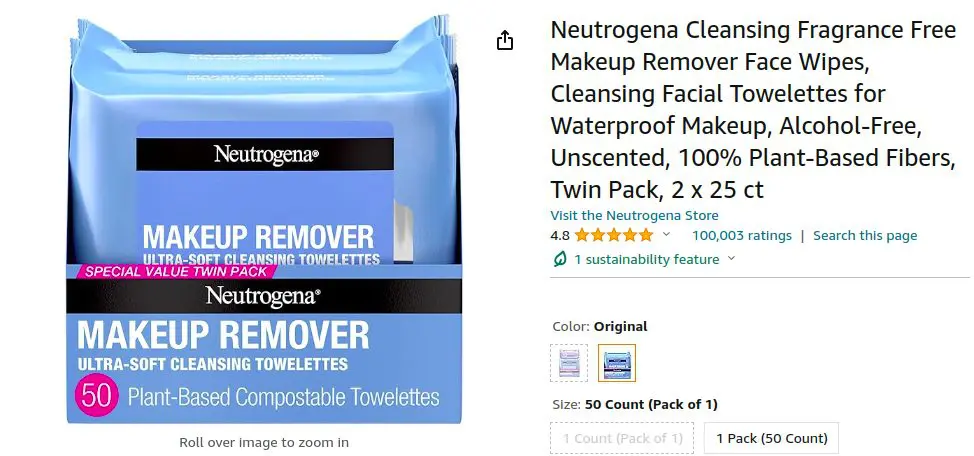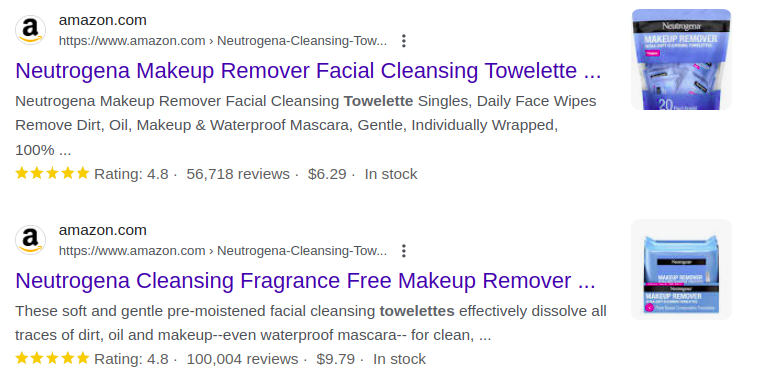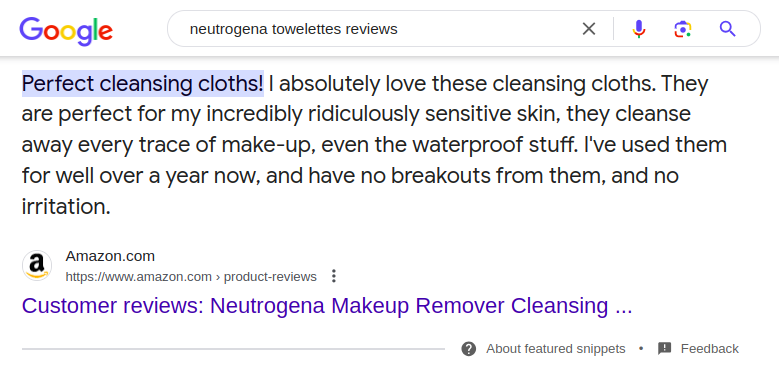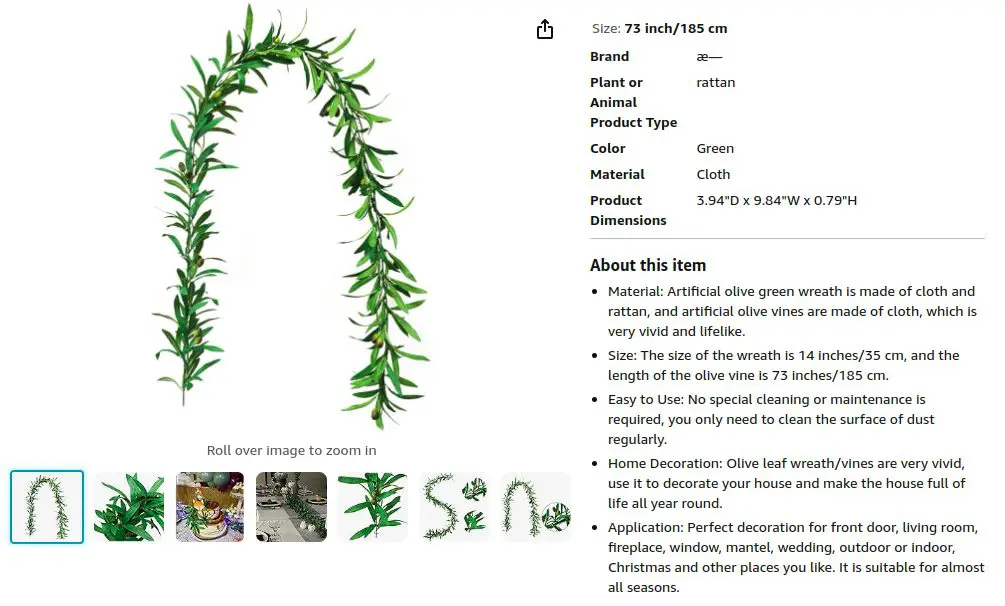Table of Contents
Such platforms are great because they give you access to a large audience. But there is so much competition out there, so reaching your audience can become a problem. Here’s where a marketplace SEO strategy comes in handy.
This practice will help you get your products and your store higher up in the search result pages and drive more sales. This article will explain everything about this approach.
What is marketplace SEO?
Marketplace SEO focuses on maximizing the rankings and exposure of your product listings both on the platform that you trade on and on Google search results.
Optimizing your product pages on a marketplace is a necessity as on Amazon, 70% of users won’t search past page one of search results. So in order to create a stable stream of sales, you’ll need your products to be as high in the marketplace search results as possible.
Since product pages don’t only appear on the marketplace itself but are also indexed by Google, business owners may face many optimization challenges. It comes with a unique set of benefits, though, the main one being that marketplaces have an audience that is ready to buy.
What is the main difference between marketplace SEO and traditional SEO?
Traditional SEO deals with the on-page and off-page optimization of your own eCommerce website. Marketplace SEO includes both optimizing listings to appear higher for internal searches on the marketplace and on Google.
Since traditional SEO deals with the website you own, you have a lot more control over many processes. You can focus on informational keywords, write articles that answer the questions posed by those keywords, and get top-of-the-funnel organic traffic that way. You also get more data, from an eCommerce SEO audit to organic traffic monitoring.
In marketplace SEO, you don’t own the site, and can only work with transactional keywords that revolve around products. There’s no way to access advanced and accurate statistics on Google Analytics or Google Search Console.
Marketplace SEO is also more productive than optimizing your own website because you leverage the authority of the marketplace site. When you can rank high, your page starts bringing in profit.
The Right Way to Do Your Marketplace SEO
Despite marketplace SEO and regular SEO having quite a different set of challenges, in many cases, the techniques used to optimize in both cases are somewhat similar. Here are six SEO tactics that will improve the ranking of your product listings.
Keyword Research
In traditional eCommerce SEO, the first thing you typically do to optimize your website is look through the technical aspects of your site and keep them in line with Google guidelines. But since you don’t have control over that in an online marketplace, the most important SEO tasks are keyword research and optimization.
Different platforms use slightly different search algorithms, but most focus on several key factors, such as seller reputation, product reviews, and user behavior. However, the most important thing is how relevant a product is to a particular search. That’s why you should figure out what keywords people will be using to find your products.
Typically, there will be more than a couple of keywords that can be assigned to each product listing.

Source: Amazon
This page, for instance, could be found for keywords like “Neutrogena makeup remover,” “compostable towelettes,” or “face wipes.” To find a list of keywords that will fit your keyword, you can follow several techniques:
- Search the marketplace keyword suggestions manually or with a web scraper
- Search competitors’ listings manually or with a web scraper
- Use a marketplace keyword suggestion tool
If you use a popular marketplace like Amazon, there are dozens of tools that can analyze the marketplace search result pages and create a list of similar keywords that fit a particular type of product.
Most listings can also appear on Google SERP, just like the one shown above.

Source: Google
This means you should also do a bit of keyword research and optimization for Google’s search algorithms and not just for Amazon. To do this, you can use an SEO keyword suggestion tool to find similar and related keywords, including long and very specific keywords. A tool like this can also help you gauge how competitive a keyword is, how hard it would be to rank for it, and the search intent.
Often, many of the keywords that are useful for both Amazon and Google will be the same, so you won’t have to do keyword optimization twice.
Optimizing your product listings
When you have the full list of keywords, add them to your listing page. The most important keywords, those with the most traffic both on the marketplace and on Google, should go into the title. The ones with lower traffic numbers that don’t describe your product as fully should go into the product description.
Don’t try to stuff the description full of keywords, though, as this could actually hurt your chances of ranking on Google. Typically, mentioning them once in the title and once or twice in the description is enough for Amazon SEO.
Titles can be quite lengthy on platforms like Amazon, but you shouldn’t forget that both Amazon and Google will cut off your title at a certain point. Google will not show more than 50-60 characters on SERPs, and Amazon will cut it off at 90 characters.
Make sure that the most important information about your product like the brand and the product name is within 60-70 characters. The rest can be used for adding keywords to the title.
Use advertising strategically
One of the major factors that websites like Amazon take into consideration when deciding what products to list first is user behavior. In particular, how many people bought the product, and sales velocity — how fast the product is being sold.
Sadly, you can’t get those metrics up if your listing is at the bottom of page five of the search. One of the fastest ways to improve it is to run ads on the platform.
When you’re trying to rank a particular product listing, try spending a bit more than usual for a week or two to boost sales. After that, it might jump up in the marketplace search. Alternatively, use tools to automate your ad optimization. Set goals you’d like to achieve (like lower your ACoS) and let AI do the heavy lifting!
Show Connections with User-Generated Content
As marketplaces have thousands of similar product listings, and sometimes dozens of identical products from different sellers, your reputation is important. The reviews influence the ranking on marketplaces. On Google search results, reviews don’t seem to influence ranking.

Source: Google
But having a positive rating and a lot of reviews can be beneficial for CTR, so they play a role in optimizing for Google as well.
To encourage users to write reviews about your products, keep customer service at a high level and use the method of soliciting reviews that your product marketplace provides. Amazon has a Request Review button, and most other marketplaces have a similar feature.
You can also outsource email marketing and run custom campaigns to attract reviews from your client list.
If you’re an Amazon seller with little to no reviews, you can try to enroll in Amazon Vine. In this program, you can send out free products to users in exchange for honest reviews.
Reviews can also be indexed by Google and shown in SERPs, sometimes even in the featured snippet position.

Source: Google
You can’t directly influence the content of reviews, but the more you get, the better your chances of having one rank on Google and bringing in traffic to your listing.
Promote your best product features
Conversion rate is an important factor in SEO for marketplaces. One of the key things that can influence it from your end is how well you can communicate information to the reader. Apart from having great photos on the product page, you want the description to be as straightforward as possible.

Source: Google
Product descriptions on Amazon can be as long as 2,000 words. Most people won’t read the whole description thoroughly. They’ll only scan the text for key information. Include the most important details about your product in the first 500 words and use bullet-point lists to make it easier for the user.
Marketplace link building
Link building is more important for getting your product listings to appear on Google searches, not on marketplaces. Typically, marketplaces don’t bother looking at links that point to particular product pages to advise rankings. However, a boost in traffic might influence rankings at some marketplaces.
What can really work to improve rankings within marketplaces is building links that bring in traffic that converts.
So prioritize links like these to receive benefits for search engines that matter for marketplace SEO:
- Links from lists of best products
- Links from educational content that references product usage
- Promotional social media links
You can create educational content like this either on your website if you have one or create guest posts for blogs in your industry. You can find dozens of websites that publish lists of products worth buying by either using Google methodically or using an SEO tool to find these types of posts linking to your competitors.
Summary
Marketplace SEO is a complicated type of search engine optimization because it involves understanding and catering to not one, but two search engines — Google and that of your marketplace.
The biggest advantage of doing it is that most large marketplaces have the authority and technical optimization needed to rank on Google, so you basically have a sufficient part of traditional eCommerce SEO done for you by the marketplace. This makes SEO for marketplaces an effective strategy for a small business.
Prioritize finding the right keywords to include in the product description and creating a description that converts. Experiment with these factors and make sure to give it around a month before to see a difference in ranking.

Scopic provides quality and informative content, powered by our deep-rooted expertise in software development. Our team of content writers and experts have great knowledge in the latest software technologies, allowing them to break down even the most complex topics in the field. They also know how to tackle topics from a wide range of industries, capture their essence, and deliver valuable content across all digital platforms.
Note: Some images in this blog are sourced from Freepik.





